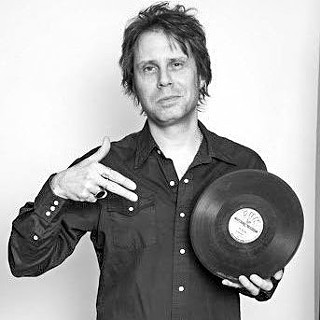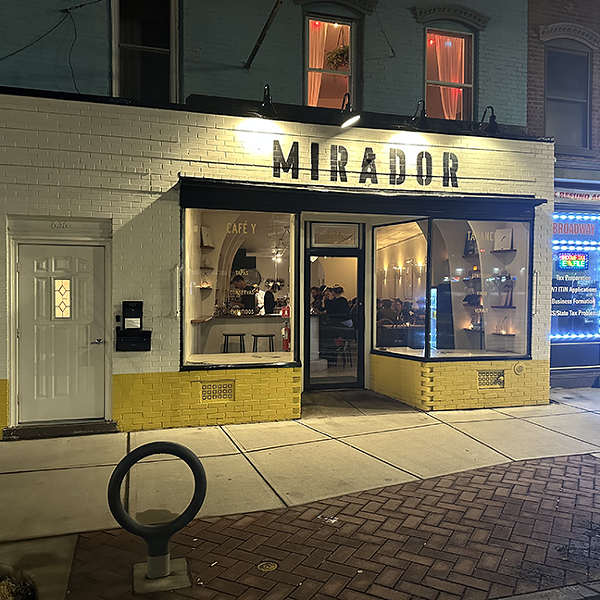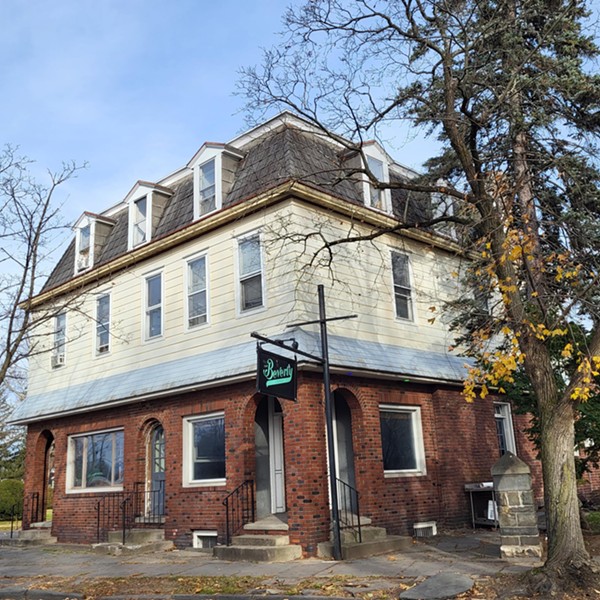When David Lynch was filming his epic adaptation of Frank Herbert’s 1965 science fiction novel Dune, he ran into a snag. The director needed a convincing stand-in for the baliset, the fantastical, futuristic instrument played by troubadour-warrior Gurney Halleck (portrayed by Patrick Stewart). Although the scene in question would ultimately be cut from the theatrical release, during its production the filmmaker eventually found the perfect prop for his out-of-this-world opus: the Chapman Stick.
Invented in 1974 by jazz guitarist Emmett Chapman, the Stick, as it’s also known, comes in 8-, 10-, and 12-string models and looks like the disembodied neck of an oversized guitar. Worn almost vertically in front of its player’s upper body with a shoulder strap and belt hook, the odd contraption appears to hover magically before the musician. But perhaps even more surreal than the sight of someone playing a Stick are the sounds it produces. With its parallel sets of low- and high-register strings, the instrument is played by tapping on its fretboard with the fingers of both hands, making it more comparable to a keyboard than a guitar. This method, together with its stereo amplifier setup and its players’ frequent use of chorus, delay, and other effects, allows for a much wider range of rhythmic and tonal possibilities than those offered by a conventional stringed instrument. The arrangement also lends itself to playing multiple lines at once, and many players, or Stickists, have perfected the technique of performing bass, octave, and melody lines simultaneously.
One of the Stick’s earliest converts—and arguably its most recognized avatar—is Kingston’s Tony Levin. Also a legend on the bass guitar, Levin has performed on over 500 albums by the likes of John Lennon, Paul Simon, Lou Reed, Cher, Pink Floyd, Yes, Buddy Rich, and Alice Cooper. But as a Stickist, he’s most revered for his groundbreaking work with Peter Gabriel and prog-rock juggernaut King Crimson during the 1980s, when he brought his furiously popping and highly timbral lines to bear on such top sellers as the former’s So (1986, Geffen Records) and the latter’s Discipline (1981, Editions EG). Besides the luminaries he’s worked with, one of Levin’s biggest fans is none other than Emmett Chapman himself. “Tony’s really taken the Stick in some unusual directions over the years,” says Chapman. “His playing definitely has a lot of thrills and chills, there’s a lot of a high-speed stuff.”
Based on the above resume, one could safely—and correctly—assume that Levin’s career itself has been filled with thrilling and speedy episodes. Born in Boston in 1946, he started learning upright bass at age 10 and was later in a local youth orchestra that performed at the White House for President John F. Kennedy. After studying at the Eastman School of Music and playing in the Rochester Philharmonic, he began to move away from classical styles to jazz and rock, a shift that in 1970 took him to New York to join keyboardist Don Preston’s band Aha! (no relation to the similary named ’80s synth-pop act A-ha). Quickly ensconcing himself in Manhattan’s busy studio scene, Levin became a much-in-demand session bassist and, after he’d played on Gabriel’s 1977 solo debut, the ex-Genesis singer tapped him for his touring band. It was during his early years with Gabriel that Levin began his ongoing and fruitful relationship with the Stick.
“I had heard that the Chapman Stick was an unusual-sounding instrument with bass capabilities,” says Levin via e-mail during a recent Japanese tour with jazz-rock outfit L’Image. “So I was attracted to the idea right way. And its tapping technique was one I had used on bass, so I wasn’t too out of my element when I first picked it up.” In 1979 Levin appeared on Robert Fripp’s Exposure (Editions EG), which led to the guitarist’s inviting him to join the newly reincarnated King Crimson, a unit he would serve with for over 20 years. Levin had settled in the Hudson Valley the year before Exposure’s release, living in Woodstock for several years before finally moving to Kingston. “[The region has] a nice community of players, plenty of jamming opportunities,” he says. “There are fewer clubs to play in nowadays, but it’s still a great area to live in.”
Another musician—and also one of the rare Stick-playing variety, coincidentally—who was lured to the Catskills is 35-year-old ex-Long Islander Michael Bernier, who had spent time in the area as a child thanks to his father’s managing of world music ensemble Futu Futu and other locally popular groups. Bernier, who arrived in 1998, was classically trained on violin and cello before he began concentrating on drums; he also plays guitar, bass, and piano. “About five years ago I was over at [Woodstock bassist and luthier] Martin Keith’s place, and there was this Chapman Stick, just sitting there,” Bernier remembers. “He wasn’t doing anything with it, so I asked if I could borrow it, just to check it out. Being a drummer, I guess I was also attracted to the Stick because it’s played very percussively, it’s not picked or plucked like a guitar or bass is. Later on, after I’d been playing it for a while and was starting to get pretty good on it, Martin told me, ‘Man, just keep it.’” Under the name Fugue, Bernier began playing with a small band and recorded an instrumental CD on which he performed all the parts. While working a day job at an uptown Kingston restaurant, he sold copies of the homemade disc from a modest display next to the cash register. One customer who bought the album turned out to be Levin, who went to see Fugue play soon after hearing the recording.

















